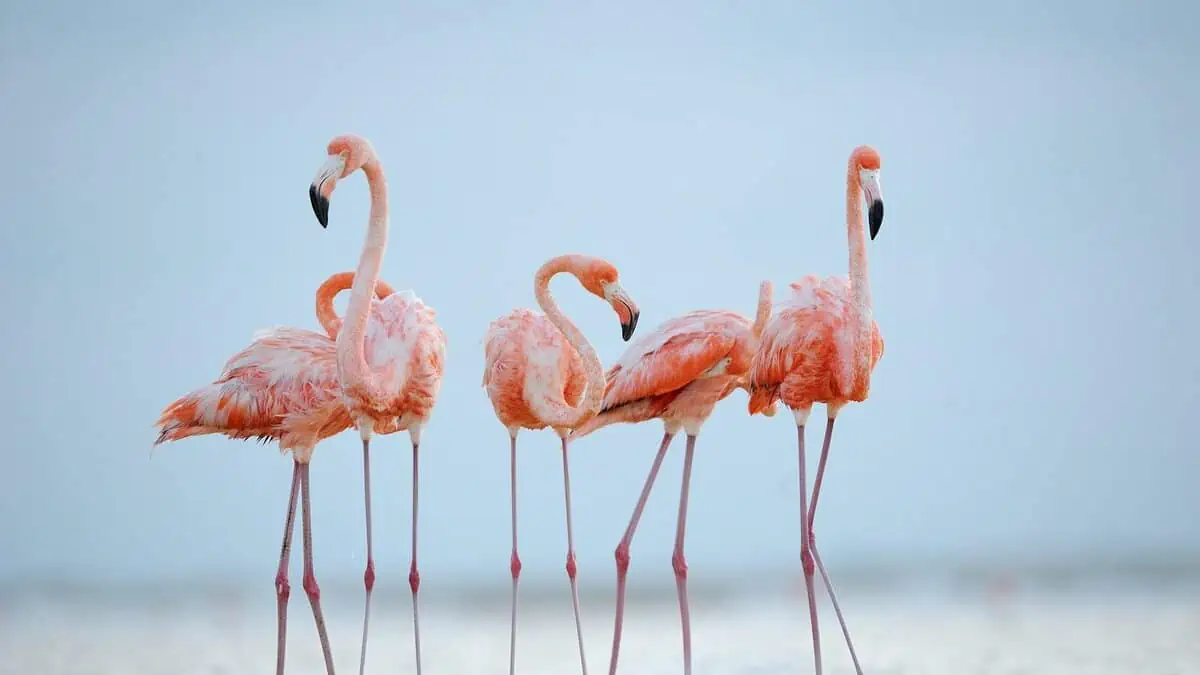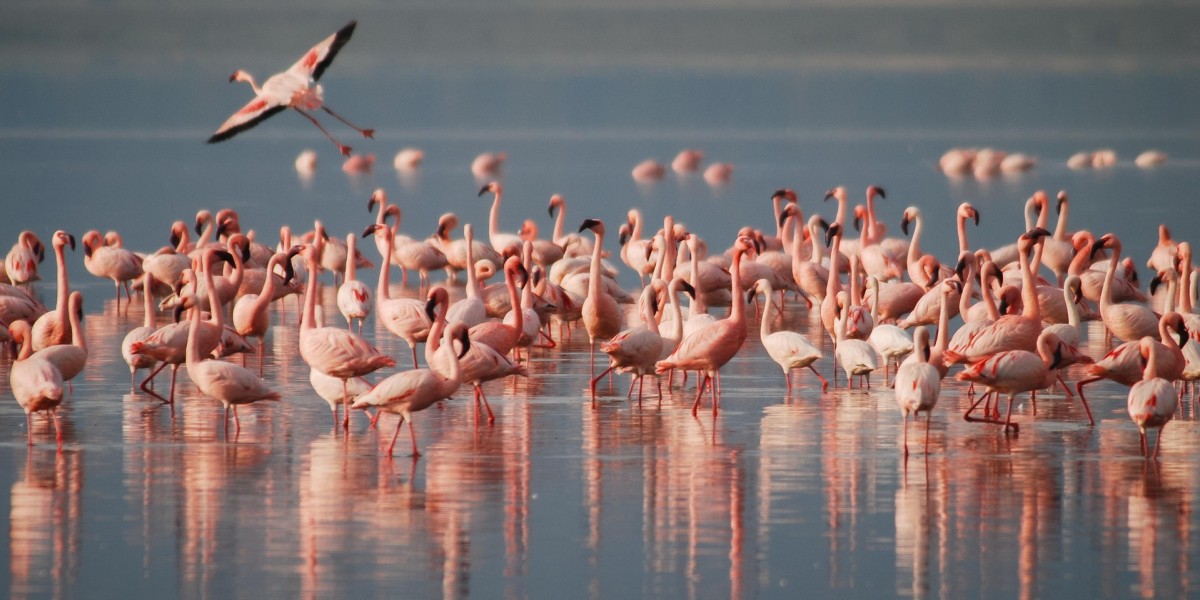Pink flamingos in Sardinia: where and when to see them in San Teodoro and beyond
I pink flamingos are one of the most fascinating natural wonders to be seen in the Mediterranean. With their elegant plumage, extremely long legs and sinuous necks, they provide nature lovers with dreamlike scenery and birdwatching. In Sardinia, their presence is so important that some ponds and lagoons have become iconic places for seeing flamingos in all their beauty. This article will guide you through the best places, ideal times and many interesting facts about these waders, with a special focus on San Teodoro and its ponds.
What makes the pink flamingo special?
The pink flamingo (scientifically called roseus) is a pink wader with neck and paws long and curved beak, a real unmistakable species that populates the Mediterranean basin. Its charm derives from the plumage particular, which is coloured by the red pigment present in the small crustaceans on which it feeds, literally dyeing the body of this volatile. This process makes each group unique and spectacular.

Where to see flamingos in Sardinia?
If you are wondering which are the best places to seeing flamingos in Sardinia, the answer is related to the wetlands and the ponds representing theideal habitat. In these areas, the groups of flamingos inhabiting the different regions strike the perfect balance between food, safety and tranquillity. Among the most popular destinations are the pond of Molentargius, I Santa Gilla pond in Cagliari, the pond of Cabras and the Mistras Lagoon in the Oristano area, as well as the pond of San Teodorowhich has become a real attraction for tourists and locals in recent years.
Why do flamingos choose ponds?
The ponds are essential for the survival of the flamingo because they offer an environment rich in small crustaceans and seaweed, their favourite diet. During the nesting periodponds provide protection and tranquillity, favouring the nesting and even the formation of new colonies in the pond. In Sardinia, brackish waters represent a ecosystem ideal where flamingos can feel at home throughout the year.
Pink flamingos in Sardinia: a success story
The presence of the Pink flamingos in Sardinia is not just a fortune, but an environmental success. The colonies in the pond of Molentargius and in the Santa Gilla pond are now among the largest in the Mediterranean. Since the 1990s, these areas have seen extraordinary growth thanks to programmes to protect the wetlands. This has made Sardinia one of the destinations prefer pink flamingosattracting thousands of visitors ready to observing and photographing these beautiful animals.
San Teodoro and the pond: a natural paradise
Lo pond of San Teodoro is one of the most evocative places for seeing pink flamingos. Located near the La Cinta beach, is a ideal habitat where it is small groups of flamingos can be observed moving elegantly between the water and the sky. The specimens, although very shy and fearfulThey give unique emotions to those who can spotting them during their crossings o as they migrate from an area to the other on the coast.
Santa Gilla and Molentargius: the flamingo capitals
Lo Santa Gilla pond and the pond of Molentargius are two authentic flamingo capitals. Here not only is possible to see large flocks, but also witness the most exciting moment of the year: the nesting. During the first weeks of Junein fact, one can admire the birds busy tending their eggs and chicks, an event that fascinates the birdwatchers and anyone who loves the Sardinian fauna.
Oristano and its wetlands
La Oristano area is another strategic point for knowing the strategic points where observing pink flamingos. Lo pond of Cabras, I pond of Santa Giusta, the Mistras Lagoon, I pond of Sale 'e Porcus, S'Ena Arrubia and the nature reserve of Genti Arrubia host colonies that animate the sky with their sky crossings. Here it is common observing small groups of flamingosbut also large flocks dyeing the landscape pink.
When to see them?
You may be wondering when to see them in their prime. Flamingos can be admire throughout the yearbut the most exciting period remains that of the nestingwhich occurs between spring and early summer. In particular, the first weeks of June are ideal for observing chicks and typical colony behaviour.

Birdwatching in Sardinia: a unique experience
For the birdwatchersSardinia is a dream destination. Not only for the flamingos, but also for other bird species as the knights of Italy. I observation sites are accessible and it is often possible to participate in tour guided that allow admire these birds without disturbing them. Thanks to the wide variety of favourite destinations, it is easy to encounter small groups o big birds in breathtaking environments.
Curiosities about the flamingo
The flamingo is a surprising animal. Despite being a pink wader with neck and paws long, curved beak, manages to maintain perfect balance while feeding or resting on one leg. Studies have shown that the flamingos inhabiting different areas of Sardinia have developed particular habits related to the availability of food. They are animals shy and fearfulbut at the same time able to withstand long journeys, forming new colonies when they find theideal habitat.
Why is it worth watching flamingos?
Poter watching flamingos up close means coming into contact with a unique piece of Mediterranean nature. Every visit to the ponds or lagoons is an opportunity to admire these birds and discover how their connection with the environment contributes to preserving theecosystem of wetlands. Whether you choose San Teodoro, Oristano or Cagliari, you will find that each place offers an unforgettable experience.
FAQ on pink flamingos in Sardinia
1. Where can you see pink flamingos in Sardinia?
Pink flamingos can be seen in the Molentargius pond, the Santa Gilla pond, the Cabras pond, the Oristano pond and the San Teodoro pond.
2. When to see them in Sardinia?
Flamingos can be observed throughout the year, but the best period is the nesting period, between May and June.
3. Why are flamingos pink?
The colour comes from the red pigment contained in the small crustaceans on which they feed, which in time colours feathers and skin.
4. What does the pink flamingo eat?
It feeds mainly on small crustaceans and algae, filtering the water with its curved beak.
5. Where do flamingos nest in Sardinia?
The main nesting sites are in the Molentargius pond and the Santa Gilla pond.
6. Can small groups of flamingos be observed in San Teodoro?
Yes, in the San Teodoro pond it is common to observe small groups near La Cinta beach.
7. Is it possible to spot them during crossings?
Yes, they can often be spotted during their crossings in the sky, especially as they migrate from one area to another.
8. What other species are found with flamingos?
Knights of Italy and many other bird species can also be observed in Sardinia.
9. Are flamingos shy and fearful?
Yes, they are very shy and fearful, so it is important to observe them without disturbing them.
10. Why is Sardinia a favourite destination for pink flamingos?
Because it offers ideal ponds and wetlands, rich in food and safe for nesting.

